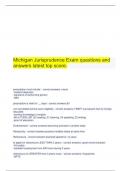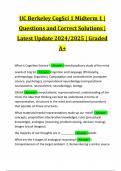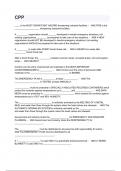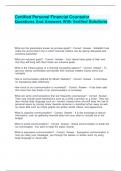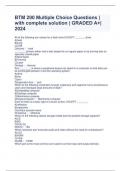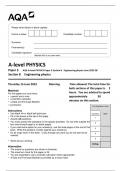Current is the amount of charge passing a point in a circuit every second
Charge = current x time
Q=Ixt
Q stands for charge (measured in coulombs, C)
I stands for current (measured in amps, A)
Direct Current (dc)
Direct current is produced when using dry cells and batteries (and sometimes
generators, although these are usually ac)
o The electrons flow in one direction only, from the negative terminal to the
positive terminal
Alternating Current (ac)
Alternating current typically comes from mains electricity and generators
It is needed for use in transformers in the National Grid (covered later in this
topic)
o The direction of
electron flow
changes direction
regularly
o A typical
frequency for the
reversal of ac
current in mains
electricity is 50 Hz
Current
- is measured using an ammeter
- Ammeters should always be connected in series with the part of the circuit you
wish to measure
- Ammeters measure the amount of charge passing through them per unit time,
so the ammeter has to be in series so that all the charge flows through it.
CONVENTIONAL CURRENT:
o Electrons are negatively charged
o This means that the electrons flow from negative to positive.
ELECTROMOTIVE FORCE:
,The electromotive force (e.m.f) is the name given to the potential difference of the
power source in a ciruit
𝑊
E=
𝑄
E = electromotive force (e.m.f.) (V)
W = energy supplied to the charges from the
power source (J)
Q = charge on each charge carrier (C)
Potential difference:
As charge flows around a circuit energy is transferred from the power source to the
charge carriers and then to the components
o This is what makes the bulb light up
o Potential difference is the work done by a unit charge passing through a
component
o Its measured in volts (V)
𝑊
V=
𝑄
o V = potential difference (p.d.) (V)
o W = energy transferred to the components from the charge carriers (J)
o Q = charge on each charge carrier (C)
RESISTANCE:
It’s the opposition to current, for a given potential difference, the higher the
resistance, the lower the current. Therefore resistirs are used in circuits to control
the current.
- The unit of resistance is ohm
𝑉
- R=
𝐼
o R = resistance (ohms, Ω)
o V = potential difference (volts, V)
o I = current (amperes, A)
Consequences of Ohm's Law
, Resistors are used in circuits to control either
o The current in branches of the circuit (through certain components)
o The potential difference across certain components
This is due to the consequences of Ohm's Law
o The current in an electrical conductor decreases as its resistance
increases (for a constant p.d.)
o The p.d. across an electrical conductor increases as its resistance
increases (for a constant current)
As the potential difference (voltage) across a component is increased,
the current in the component also increases
The precise relationship between voltage and current can be different for
different types of components and is shown by an IV graph:
The IV graph for a resistor is very simple:
The current is proportional to the potential difference
This is because the resistor has a constant resistance
For a lamp the relationship is more complicated:
The current increases at a proportionally slower rate than the potential difference
This is because:
o The current causes the
filament in the lamp to heat
up
o As the filament gets hot,
its resistance increases
o This opposes the current,
causing it to increase at
a slower rate
RESISTANCE OF A WIRE:
The longer a wire, the greater its resistance
The thicker the wire, the smaller its resistance
- Resistance is directly proportional to length
- Resistance is inversely proportional to cross – sectional area


